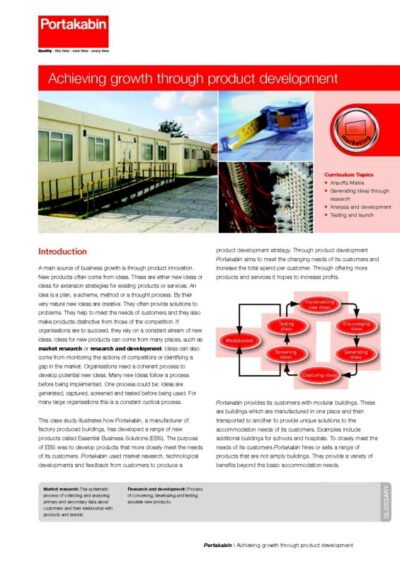The Benefit-Cost Ratio (BCR) is a fundamental concept in economic analysis, particularly in the realm of project evaluation and public policy. It serves as a quantitative measure that compares the total expected benefits of a project or investment to its total expected costs. The ratio is calculated by dividing the present value of benefits by the present value of costs.
A BCR greater than one indicates that the benefits outweigh the costs, suggesting that the project is economically viable. Conversely, a BCR less than one implies that the costs exceed the benefits, signalling that the project may not be worth pursuing. Understanding the BCR is crucial for stakeholders, including policymakers, investors, and project managers, as it provides a clear framework for assessing the economic feasibility of various initiatives.
It allows for a systematic comparison of different projects, enabling decision-makers to allocate resources more effectively. The simplicity of the BCR makes it an attractive tool; however, it is essential to grasp its underlying assumptions and implications fully. The ratio not only reflects financial outcomes but also encompasses social, environmental, and long-term economic impacts, making it a versatile instrument in both public and private sectors.
Summary
- The benefit-cost ratio (BCR) is a financial metric used to compare the benefits of a project or decision with its costs.
- To calculate the BCR, divide the total discounted benefits by the total discounted costs of a project or decision.
- The BCR is important in decision making as it helps to determine the economic viability and potential return on investment of a project.
- A BCR greater than 1 indicates that the benefits outweigh the costs, while a BCR less than 1 indicates the opposite.
- Limitations of the BCR include difficulty in quantifying intangible benefits and costs, and the potential for bias in the selection of projects for analysis.
Calculating the Benefit-Cost Ratio
Calculating the Benefit-Cost Ratio involves several steps that require careful consideration of both benefits and costs associated with a project. The first step is to identify all potential benefits that the project may generate. These can include direct financial returns, such as increased revenue or cost savings, as well as indirect benefits like improved public health or environmental sustainability.
Each benefit must be quantified in monetary terms to facilitate comparison with costs. This process often involves estimating future cash flows and applying discount rates to account for the time value of money. Once the benefits have been quantified, the next step is to calculate the total costs associated with the project.
Costs can be classified into various categories, including initial capital expenditures, ongoing operational costs, and any potential negative externalities that may arise from the project’s implementation. Similar to benefits, costs should also be expressed in present value terms to ensure an accurate comparison. After determining both total benefits and total costs, the BCR can be computed using the formula: BCR = Present Value of Benefits / Present Value of Costs.
This straightforward calculation provides a clear numerical representation of the project’s economic viability.
Importance of Benefit-Cost Ratio in Decision Making
The Benefit-Cost Ratio plays a pivotal role in decision-making processes across various sectors. For government agencies, it serves as a critical tool for prioritising public investments and ensuring that taxpayer money is spent efficiently. By evaluating projects through the lens of BCR, policymakers can identify initiatives that promise the highest returns on investment, thereby maximising social welfare.
This is particularly important in times of budget constraints when resources are limited and must be allocated judiciously. In the private sector, businesses utilise BCR to assess potential investments and strategic initiatives. For instance, when considering launching a new product or entering a new market, companies can employ BCR analysis to weigh potential profits against associated costs.
This analytical approach not only aids in making informed decisions but also enhances accountability within organisations. By demonstrating a clear rationale for investment choices based on quantifiable data, businesses can foster trust among stakeholders and investors, ultimately leading to more sustainable growth.
Interpreting the Benefit-Cost Ratio
Interpreting the Benefit-Cost Ratio requires an understanding of its implications beyond mere numerical values. A BCR greater than one indicates that a project is expected to generate more benefits than costs, which is generally seen as a positive outcome. However, it is essential to consider the magnitude of the ratio; a BCR of 1.1 suggests only a marginal benefit over costs, while a BCR of 5.0 indicates substantial economic advantages.
Therefore, stakeholders must assess not only whether a project is viable but also how attractive it is relative to other potential investments. Moreover, interpreting BCR results should involve contextual considerations such as risk factors and uncertainties associated with both benefits and costs. For instance, if a project has a high BCR but is subject to significant market volatility or regulatory changes, its attractiveness may diminish despite favourable initial calculations.
Additionally, qualitative factors such as social equity or environmental impact should also be integrated into the interpretation process. A project with a lower BCR might still be preferable if it aligns with broader societal goals or addresses pressing community needs.
Limitations of the Benefit-Cost Ratio
Despite its utility, the Benefit-Cost Ratio has several limitations that must be acknowledged when conducting analyses. One significant drawback is its reliance on quantifying benefits and costs in monetary terms, which can be challenging for certain intangible factors such as social equity or environmental sustainability. For example, while a project may yield substantial economic returns, it could also lead to adverse social consequences that are difficult to quantify accurately.
This limitation can result in an incomplete picture of a project’s overall impact. Another limitation lies in the assumptions made during the calculation process, particularly regarding discount rates and future projections. The choice of discount rate can significantly influence the present value calculations; a higher discount rate diminishes future benefits more than a lower rate would.
Additionally, projecting future benefits and costs involves inherent uncertainties that can skew results. If these uncertainties are not adequately addressed through sensitivity analysis or scenario planning, decision-makers may find themselves relying on potentially misleading BCR figures.
Examples of Benefit-Cost Ratio Analysis
Expected Benefits
The expected benefits of this project might include reduced travel times for commuters, lower vehicle operating costs, decreased air pollution levels, and enhanced accessibility for underserved communities. By quantifying these benefits in monetary terms—perhaps through estimates of time saved and health-related cost reductions—analysts can derive a total present value of benefits.
Costs Associated with the Project
On the cost side, expenses could encompass construction costs for new transit infrastructure, ongoing operational expenses, and potential disruptions during construction phases.
Calculating the Benefit-Cost Ratio
After calculating both sides, suppose analysts determine that the present value of benefits amounts to £10 million while total costs are estimated at £6 million. This results in a BCR of approximately 1.67 (10 million / 6 million), indicating that for every pound spent on the project, there are £1.67 in expected benefits—a compelling case for investment.
Using Benefit-Cost Ratio for Project Evaluation
The Benefit-Cost Ratio serves as an essential tool for evaluating projects across various sectors by providing a structured approach to assess their economic viability. In public sector projects, such as infrastructure development or social programmes, BCR analysis helps governments prioritise initiatives that deliver maximum societal benefit relative to their costs. For instance, when evaluating multiple infrastructure projects—such as road improvements versus public transport enhancements—decision-makers can use BCRs to identify which projects offer superior returns on investment.
In the private sector, companies often employ BCR analysis when considering capital investments or new product launches. By comparing different investment opportunities through their respective BCRs, businesses can allocate resources more effectively and pursue projects that align with their strategic objectives while maximising profitability. Furthermore, using BCR as part of a broader evaluation framework—including qualitative assessments—enables organisations to make well-rounded decisions that consider both financial returns and broader impacts on stakeholders.
Improving the Benefit-Cost Ratio through Cost-Benefit Analysis
Enhancing the Benefit-Cost Ratio often involves conducting thorough Cost-Benefit Analysis (CBA), which systematically evaluates all potential costs and benefits associated with a project or investment decision. By refining estimates and ensuring comprehensive coverage of all relevant factors—both tangible and intangible—organisations can improve their BCR outcomes significantly. For instance, incorporating environmental benefits into CBA can elevate the perceived value of projects that contribute positively to sustainability goals.
Moreover, sensitivity analysis can be employed within CBA to assess how changes in key assumptions—such as discount rates or projected cash flows—affect the BCR outcome. This approach allows decision-makers to understand better the range of possible scenarios and make informed choices based on varying conditions. By continuously refining their methodologies and incorporating stakeholder feedback into CBA processes, organisations can enhance their ability to achieve favourable BCRs while aligning projects with broader societal objectives and values.
If you are interested in learning more about how to increase the profitability of your business, you may want to check out the article Sustainable Fulfilment: How to Increase the Profitability of Your Online Store with Sustainable Solutions. This article provides valuable insights on how to implement sustainable practices in your business to drive profitability and success. By focusing on sustainable solutions, you can not only improve your bottom line but also make a positive impact on the environment.
FAQs
What is Benefit-Cost Ratio?
Benefit-Cost Ratio (BCR) is a financial metric used to evaluate the desirability of a project or investment. It compares the benefits of a project or investment to its costs, providing a ratio that indicates the potential return on investment.
How is Benefit-Cost Ratio calculated?
The Benefit-Cost Ratio is calculated by dividing the total discounted benefits of a project or investment by the total discounted costs. The formula is: BCR = Total discounted benefits / Total discounted costs.
What does a Benefit-Cost Ratio of 1 mean?
A Benefit-Cost Ratio of 1 indicates that the benefits of a project or investment are equal to the costs. In other words, for every unit of cost, there is an equivalent unit of benefit. A BCR greater than 1 indicates that the benefits outweigh the costs, while a BCR less than 1 indicates that the costs outweigh the benefits.
What are the limitations of Benefit-Cost Ratio?
The Benefit-Cost Ratio does not account for the timing of costs and benefits, the risk associated with the project or investment, or the distribution of costs and benefits among different stakeholders. It also relies on accurate estimation of costs and benefits, which can be challenging.
How is Benefit-Cost Ratio used in decision-making?
The Benefit-Cost Ratio is used by businesses, governments, and other organizations to compare the potential returns of different projects or investments. It helps decision-makers prioritize and allocate resources to projects or investments that are expected to generate the highest returns relative to their costs.
 Achieving growth through product development (PDF)
Achieving growth through product development (PDF)  Motivation in action (MP3)
Motivation in action (MP3) 

